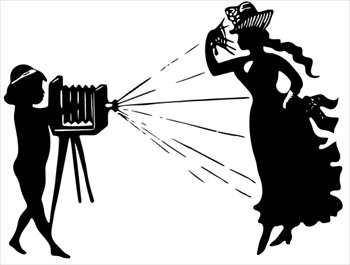The Academy operates like a corporation, and like every corporation it will work hard to maintain its facade of diversity.

I’m watching the Oscars show on ABC and, as usual, it’s filled with massive amounts of ass-kissing and lots of dresses that are more about advertising designers than demonstrating any sense of individual style.
Among the contenders present is Charlotte Rampling, whose image as an ice goddess was cracked somewhat when she was reported to have made the comment that the controversy over diversity was “racist to whites.”
Rampling may not understand the historical context and meaning of “racism” as a word or, indeed, what it means in the everyday lives of non-white people. And, by most accounts, neither does the Academy of Motion Pictures and Sciences, whose members are overwhelmingly older, male, and white.
There has been a lot of talk about changing the makeup of the Academy. Following the recent set of controversies, it announced that it would “double the number of women and ethnic minority members by 2020.” Currently, the Academy is 94 percent white and 77 percent male and, as the writer and director Lexy Alexander points out, when that’s your starting point, “admitting about 300 new, diverse members a year is hardly going to tip the scale.”
There’s more to the diversity problem than the issue of simply recruiting newer, younger, more diverse members.
A New York Times profile of Peggy Siegal, described as “the omnipresent New York film publicist and event planner,” gives a better indication of where real Hollywood power resides and circulates. You may not have known about Siegal, even as an avid fan of Hollywood, but the Times helpfully describes Siegal’s multi-decade career as a power broker who arranges “intimate, exclusive” events like lunches and dinners which include, say, panel discussions where Oscar contenders like Leonardo DiCaprio might talk to and mingle with voting members of the Academy.
Sound fishy? It is, but Siegal’s events manage to cleverly skirt the Academy’s rules about lobbying for Oscars because they’re cloaked as social gatherings. The profile of Siegal reveals her immense power — Sting and Charlie Rose are among her guests, and her friends include Michael Douglas and John Travolta. It also reveals that she is a thoroughly nasty human being, someone who treats waiters with contempt and who retains, at 68, a deep anger at being made to go to public school “with the children of hairdressers and gas station attendants,” an experience she describes as “beyond humiliating” because her brother got to attend private school.
It’s a fascinating portrait, not just of a powerful human being but of the system that actually runs Hollywood.
For all the talk about diversity and recruitment, we have to dispense with the idea that adding more people of colour is going to fundamentally change the Academy or how the Oscars are handed out. The Academy operates like a corporation, and like every corporation it will work hard to maintain its facade of diversity. I have no doubt that it will be more “diverse” in ten years or less. But in the end, we will simply have a diverse set of faces fronting an industry that has nearly $90 billion at stake each year.
It’s not that diversity doesn’t matter, or that the Oscars shouldn’t reflect the world at large. But a better alternative might be for us to dispense with the idea that the Oscars actually matter and begin to acknowledge that the very idea of “best” in any category is specious and fictional. An Oscar can boost the visibility of little-known films and artists but we also have to remember that these days the Oscars usually (with rare exceptions like the Coens receiving an award for No Country for Old Men) define phenomenally bad taste disguised in slick appeal, and that an adherence to its fictional standards requires a turn to the maudlin, the simplistic, the showy, the most easily assimilated tediously pious “messages” to appeal to the broadest swath of viewers. That’s not a snobby statement about “movies” versus “films” — I only watch the former, and I’m a fan of Tom Cruise — but the Academy is most invested in surface depth. In that sense, this year’s nomination of Mad Max: Fury Road is the most honest yet, an acknowledgement that a movie, one that involves a long road trip, can be as well-crafted and interesting as a “film.”
It may well be that Peggy Siegal’s exclusive lobbying events will be filled with more ethnic and racial minorities, perhaps to her deep annoyance, but the brute force of raw power and money, unimaginably large amounts of money, will remain. Diversity will not change that.
Don’t plagiarise any of this, in any way. I have used legal resources to punish and prevent plagiarism, and I am ruthless and persistent. I make a point of citing people and publications all the time: it’s not that hard to mention me in your work, and to refuse to do so and simply assimilate my work is plagiarism. You don’t have to agree with me to cite me properly; be an ethical grownup, and don’t make excuses for your plagiarism. Read and memorise “On Plagiarism.” There’s more forthcoming, as I point out in “The Plagiarism Papers.” If you’d like to support me, please donate and/or subscribe, or get me something from my wish list. Thank you.
